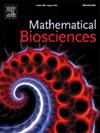评估基于沃尔巴克氏体的疟疾控制的影响。
IF 1.8
4区 数学
Q2 BIOLOGY
引用次数: 0
摘要
疟疾仍然是全球一种重要的传染病,每年造成数十万人死亡。传统的控制方法,如疾病监测和蚊虫控制,以及疟疾疫苗的开发,在减少疾病影响方面取得了长足进展,但迫切需要新的控制方法。沃尔巴克氏体是一种天然细菌,可以感染蚊子并降低它们传播疾病的能力。虽然最初用于控制登革热,但最近的研究探索了其控制疟疾的潜力。在这项研究中,我们开发并分析了一个新的数学模型来评估基于沃尔巴克氏体的疟疾控制策略的潜在用途。该模型描述了蚊子之间复杂的沃尔巴克氏体传播动力学,并结合了具有动态免疫反馈的人类疟疾传播的关键特征。我们推导出疟疾传播的基本繁殖数,这取决于沃尔巴克氏体在蚊子中的流行。我们的研究结果揭示了沃尔巴克氏体在蚊子中的传播和疟疾在人类中的传播存在分歧,这表明通过基于沃尔巴克氏体的干预措施有可能消除疟疾。敏感性分析确定了基本繁殖数和减少和消除疟疾的重要参数。我们在数字上探索沃尔巴克氏体和其他疟疾控制的整合。当控制的重点是减少人类的疟疾负担时,在人类干预后,疟疾流行率出现了大幅反弹,我们的研究结果表明,沃尔巴克氏体病后的疟疾控制导致感染总天数的最大减少。当沃尔巴克氏体释放与预释放蚊子控制相结合时,如果在沃尔巴克氏体释放前几天进行预释放蚊子控制,则总感染天数会相对减少。本文章由计算机程序翻译,如有差异,请以英文原文为准。
Assessing the impact of the Wolbachia-based control of malaria
Malaria remains a significant infectious disease globally, causing hundreds of thousands of deaths each year. Traditional control methods, such as disease surveillance and mosquito control, along with the development of malaria vaccines, have made strides in reducing the disease’s impact, but new control methods are urgently needed. Wolbachia is a natural bacterium that can infect mosquitoes and reduce their ability to transmit diseases. While initially used to control dengue fever, recent research explored its potential for malaria control. In this study, we develop and analyze a novel mathematical model to assess the potential use of Wolbachia-based strategies for malaria control. The model describes the complex Wolbachia transmission dynamics among mosquitoes and incorporates key features of malaria transmission in humans with dynamical immunity feedback. We derive the basic reproduction number of the malaria disease transmission, which depends on the prevalence of Wolbachia in mosquitoes. Our findings reveal bifurcations in both Wolbachia transmission among mosquitoes and malaria transmission in humans, suggesting the potential for malaria elimination through Wolbachia-based interventions. The sensitivity analysis identifies the important parameters for the basic reproduction number and for malaria reduction and elimination. We numerically explore the integration of Wolbachia and other malaria controls. When control focuses on reducing the malaria burden in humans, there is a substantial rebound in malaria prevalence following the intervention in humans, and our results suggest post-Wolbachia malaria control leads to the greatest reduction in total days of infection. When Wolbachia release is integrated with pre-release mosquito control, there is a comparably large reduction in total days of infection if pre-release mosquito control occurs only a few days before Wolbachia release.
求助全文
通过发布文献求助,成功后即可免费获取论文全文。
去求助
来源期刊

Mathematical Biosciences
生物-生物学
CiteScore
7.50
自引率
2.30%
发文量
67
审稿时长
18 days
期刊介绍:
Mathematical Biosciences publishes work providing new concepts or new understanding of biological systems using mathematical models, or methodological articles likely to find application to multiple biological systems. Papers are expected to present a major research finding of broad significance for the biological sciences, or mathematical biology. Mathematical Biosciences welcomes original research articles, letters, reviews and perspectives.
 求助内容:
求助内容: 应助结果提醒方式:
应助结果提醒方式:


